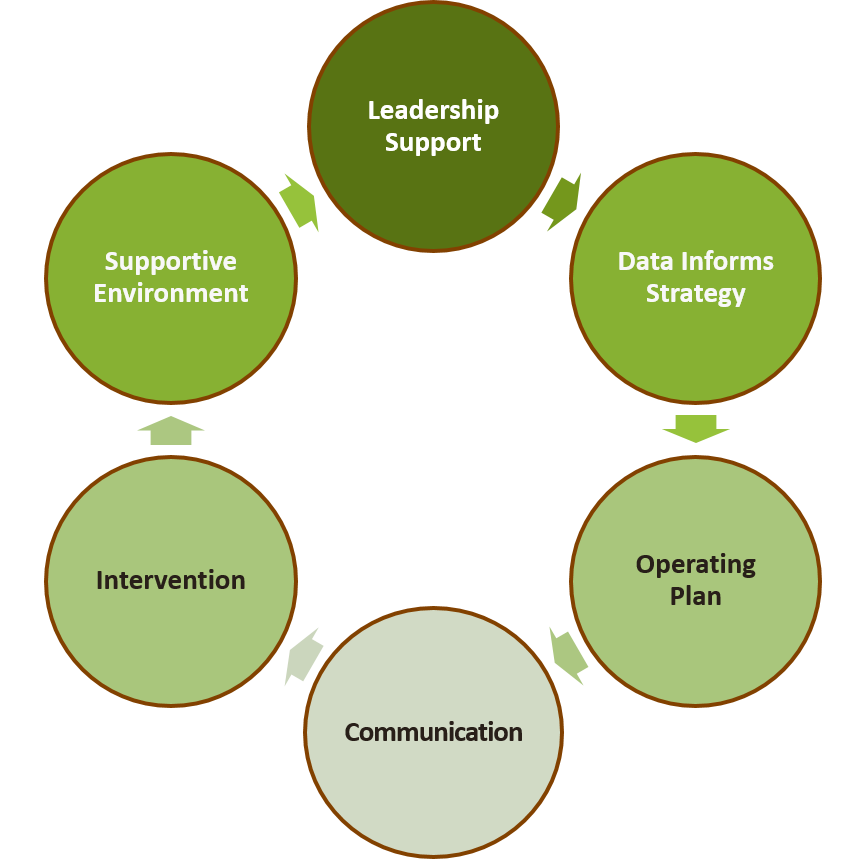There are six critical success factors for implementing an effective health contingent wellness program. It all begins at the top with leadership support and gaining leadership buy in. For example, you can start with a walk the talk program, so that your managers, supervisors and leaders can experience, first hand, just what they are going to be asking their employees to do. The next step involves using data to inform the strategy, including biometric data, and health risk assessment data. For those of you who may say, “Claims data isn’t available to me. Can you still work with biometrics and HRA?” Absolutely. In fact, we can even, work with an employee survey, if health risk assessments and biometrics just aren’t something that are practical for you to do in the first year or two, due to perhaps budget constraints. 
Data informs strategy, which results in an operating plan. The operating plan outlines details such as interventions, timelines, and communications. Next comes the communication step which is usually easier said than done. You can have the best laid plans for a wellness program, but if you don’t have people participating, frankly you don’t have a wellness program. An effective communication campaign paves the way for awareness that leads to participation. If this is an area you struggle with, rest assured you are not alone! And, there is help! Communication points employees to the interventions designed with them and your population’s health risks in mind. This includes worksite wellness resources, lunch and learns, fitness classes, clinical education (ie diabetes education), care coordination, and/or follow-up with a healthcare provider. Interventions are also supported through a healthy workplace environment where healthy choices are the easy choices, from encouraging walking meetings, to re-vamping what is offered in the vending machine. The options are endless and unique to each environment.
Contact Us: If you have questions or would like an initial consultation on your wellness program.
Subscribe to our email list for the latest updates and news.
Create an outcomes based approach to wellness with a focus on prevention: click here for article.
Case Study:
We’ve highlighted a particular employer and how they went down the path of implementing a workplace risk reduction strategy in this case study.
Legal Guidelines:
Additionally we’ve invited our legal counsel, Iris Tilley from Barran Liebman Attorneys, to address legal considerations to be aware of when moving forward with a health contingent wellness program, click here.
Webinar video: In this Webinar video we share ideas and strategies for implementing a workplace wellness program into your workplace. First we focus on the benefits of a workplace wellness program, both from the employer perspective and then also from the employee perspective. We also share some tips for focusing on prevention and talk about specific risk reduction strategies that you can implement in your workplace. Then we wrap it up with what’s next in workplace wellness.
Author:
Karla Thommen, MS, Health and Productivity Team at The Partners Group
In this role, Karla works with employers on their health improvement and wellness strategies, specializing in hospital and healthcare systems.


